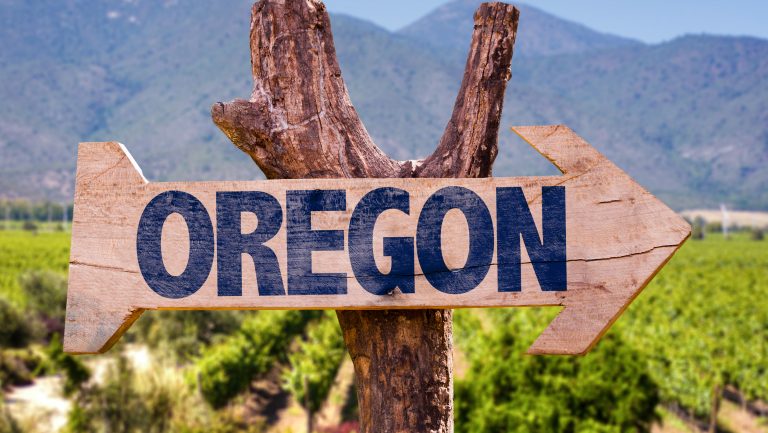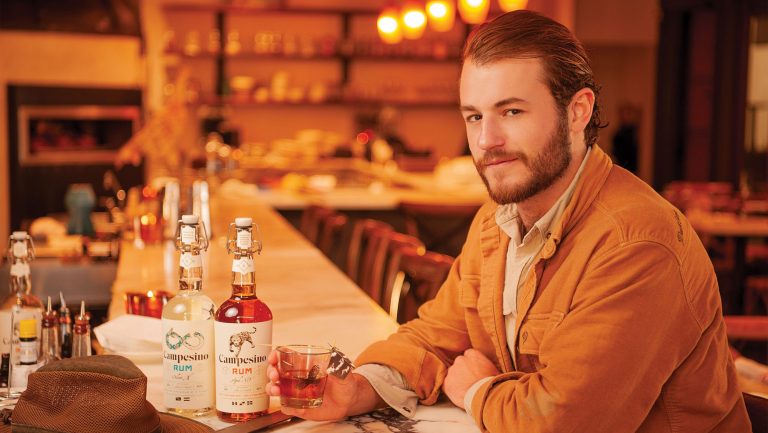At the 2018 Oregon Wine Symposium this week, Nielsen’s senior vice president of beverage alcohol practice, Danny Brager, announced that Oregon has the fastest-growing wine industry of any state. The state’s annual wine sales increased 17 percent in 2017 (over 2016) compared with 2.3 percent for Washington, 3 percent for California, and 2.8 percent for the U.S. overall.
One of the most interesting panels of the two-day symposium was “What’s Next for Oregon? Exploring Oregon’s Changing Wine Landscape.” There were three official panel members: land-use expert Richard P. Mendelson, from Dickenson, Peatman & Fogarty; Liz Thach, MW, a professor of wine and management at Sonoma State University; and Chris Tanghe, MS, the chief instructor at GuildSomm (and Wine Enthusiast’s 2017 Sommelier of the Year). But on the spur of the moment, moderator Bree Boskov, MW, of the Oregon Wine Board asked Ken Wright (of Ken Wright Cellars) and David Adelsheim (of Adelsheim Vineyard)—both respected figures in the Oregon wine industry—to join the panel.
The trend of sub-AVAs and “nested AVAs” (or AVAs within AVAs) is going strong, said Mendelson. Napa Valley already has 16 nested AVAs, and the Willamette Valley (so far) has six. “It harkens back to the old-world appellation hierarchy,” Mendelson said. But it creates some marketing challenges. “What I had seen in France was that ‘Bordeaux’ became nonexistent on labels of Médoc and even finer, distinguished wines,” he said. “You will not see the word ‘Bordeaux’ on the label.” The more consumers become familiar with a sub-AVA—Yamhill-Carlton, for instance, or Russian River in California—the less they associate that wine with its larger AVA.

Don’t miss the latest drinks industry news and insights. Sign up for our award-winning newsletters and get insider intel, resources, and trends delivered to your inbox every week.
But there is a way around the problem: conjunctive labeling—that is, including the names of both the sub-AVA and the larger AVA on the label. Thach used the example of Sonoma Valley. In 2005, there were 13 AVAs in Sonoma Valley, and many had separate marketing associations that were really good at their job. “Sonoma County was not being marketed at all,” Thach said. “No one was putting ‘Sonoma County’ on their labels.” As a result, sub-AVAs such as Russian River were better known to consumers (who may not even have known Russian River was in Sonoma County).
That changed when grape growers came to the vintners and suggested conjunctive labeling. After consumer surveys and many conversations, the various players created a Sonoma County logo and a joint marketing program with a digital strategy, events, media tours, and the like. In 2010 the California legislature passed the idea into law, requiring all wineries in Sonoma County who claimed a sub-AVA on their label to also have the words “Sonoma County” on their label. Thach says the logo—a stamp that reads Sonoma County—has been highly effective, especially because it means wineries don’t have to entirely redesign their labels. (The stamp is placed to the right.)
Oregon winemakers may wish to pay attention to this success story.
At a recent meeting of the Willamette Valley Winery Association’s marketing committee, winemakers brought 40 bottles of their wine to share. Of those bottles, 36 didn’t have the words “Willamette Valley” on them. “Which is amazing, just amazing,” Wright said at the symposium. He worried that something valuable might be lost in the single-minded focus on the marketing of sub-AVAs: “We have forsaken the Willamette Valley.”
The experience got Wright thinking. Last summer, he called together a group of Oregon winemakers to discuss his concerns. Eight concepts came out of their lively discussion, but the two he mentioned at the Oregon Wine Symposium were conjunctive labeling and a requirement for 100 percent varietal content for Pinot Noir and Chardonnay. (At the moment, Oregon state law allows winemakers to use up to 5 percent of other grapes in a varietal without declaring them on the label. Federal law allows even more leeway—it allows producers to add up to 25 percent of other varietals without declaring them.)
Though at first it may seem unrelated, the idea of having 100 percent varietal content shares the same goal as conjunctive labeling: to protect the name of Willamette Valley and the high quality of its Pinot Noir. Wright’s concern stems from the fact that most choice areas in the Willamette Valley are already planted. New growers and winemakers are planting on the valley floor and may be making “thin, diluted wine,” mixing it with other grapes, and marketing it as Willamette Valley Pinot Noir. “And that,” said Wright, “would be a problem.
Thach challenged Oregon winemakers to try to bring more entry-priced bottles to market. Oregon wineries produce plenty of luxury and ultra-premium wine, as Thach demonstrated with a graph that showed Domaine Serene on the high end (with a $320 bottle) but very few bottles in the $15-to-$20 range. Entry-level wines, she said, will help reel in consumers who have not yet tried Oregon wines because of their high price tag. “It still needs to be good, clean, fruit-forward wine that’s accessible,” Thach said. “Just not as expensive.” She emphasized that it doesn’t even have to be Pinot Noir.
Tanghe, who teaches a master class on the Willamette Valley AVA for GuildSomm, spoke about the four Oregon sub-AVAs that are currently under consideration with the TTB: Laurelwood (nestled into the Chehalem Mountain AVA), Mount Pisgah in Polk County, Tualatin Hills (abutting the Chehalem Mountain AVA and the proposed Laurelwood AVA), and Van Duzer Corridor. He said applicants are frustrated that they have been waiting three years for approval from the TTB. Mendelson advised patience, in his experience with Paso Robles, California, it can take as long as seven years for approval to be granted.
Earlier in the symposium, Mendelson had reminded attendees that to be approved as a distinct AVA you must prove that you have “distinguishing viticultural features”—such as climate, geology, soils, elevation, or physical features. But once an AVA is approved by the TTB, it needs something more ephemeral if it doesn’t want to “die on the vine”: strong leadership. “And then that leadership has to justify the value-add [higher prices] and you must protect the name,” Mendelson said. It will be interesting to see whether the TTB will approve the proposed new AVAs—and whether conjunctive labeling will soon be coming to the Willamette Valley.
Correction: An earlier version of this article referred to 100% varietal content required in some Spanish and Italian regions. The reference was removed.

Dispatch
Sign up for our award-winning newsletter
Don’t miss the latest drinks industry news and insights—delivered to your inbox every week.
Hannah Wallace writes about food, wine, sustainable agriculture, health, and travel for CivilEats.com, Inc., Food & Wine, Vogue, Portland Monthly, and the New York Times.







